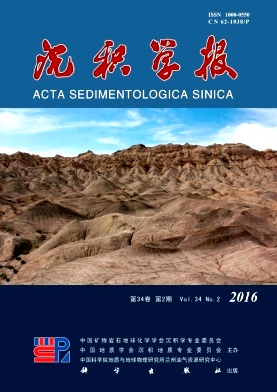Contrasting Biomarker Characteristics of Ordovician Mud Shale and Carbonate Rocks in South-western Margin of Ordos Basin
doi: 10.14027/j.cnki.cjxb.2016.02.019
- Received Date: 2014-10-24
- Rev Recd Date: 2015-09-06
- Publish Date: 2016-04-10
-
Key words:
- Ordos Basin /
- Majiagou Formation /
- Pinliang Formation /
- biomarkers
Abstract: Carbonate rocks of the Majiagou Formation and mud shale rocks of the Pingliang Formation of the Ordovician system were sampled from 4 sections in the south-western margin of the Ordos Basin. GC-MS analyses were made on the saturated and aromatic hydrocarbons of the dissolved organic matter extracted from the rock samples. Contrasting studies were made on the biomarker characteristics of carbonate of the Majiagou and mud shale of the Pingliang formations. The results show that there exist obvious differences in the n-alkane distribution types, peak patterns, biomarker ratios of Pr/Ph, gamacerane/C30-αβ-hopane, C20-29tricyclic terpanes/(C20-29 tricyclic terpanes+C27-35hopanes), and methylphenanthrene index (MPI) between carbonate of the Majiagou and mud shale of the Pingliang formations. These differences are the results of different depositional environments and thermal maturities of the Majiagou and Pingliang formations and are significant for the discriminating of oils derived from the Majiagou and the Pingliang formations. The corresponding relations among the n-alkane distribution types, the sterane/hopane ratio and the C28/C29ααα20R ratio of steranes in the Majiagou Formation reflect subtle differences in organic matter sources. Correlations between Ts/(Ts+Tm) and gamacerane/C30-αβ-hopane ratios, and between C29-sterane αββ/(αββ+ααα) ratio and abundances of rearranged hopanes and steranes suggest obvious influence of depositional environment on these maturity parameters.
| Citation: | WANG WanChun, WANG XiaoFeng, ZHENG JianJing, WANG ZuoDong. Contrasting Biomarker Characteristics of Ordovician Mud Shale and Carbonate Rocks in South-western Margin of Ordos Basin[J]. Acta Sedimentologica Sinica, 2016, 34(2): 404-414. doi: 10.14027/j.cnki.cjxb.2016.02.019 |






 DownLoad:
DownLoad: